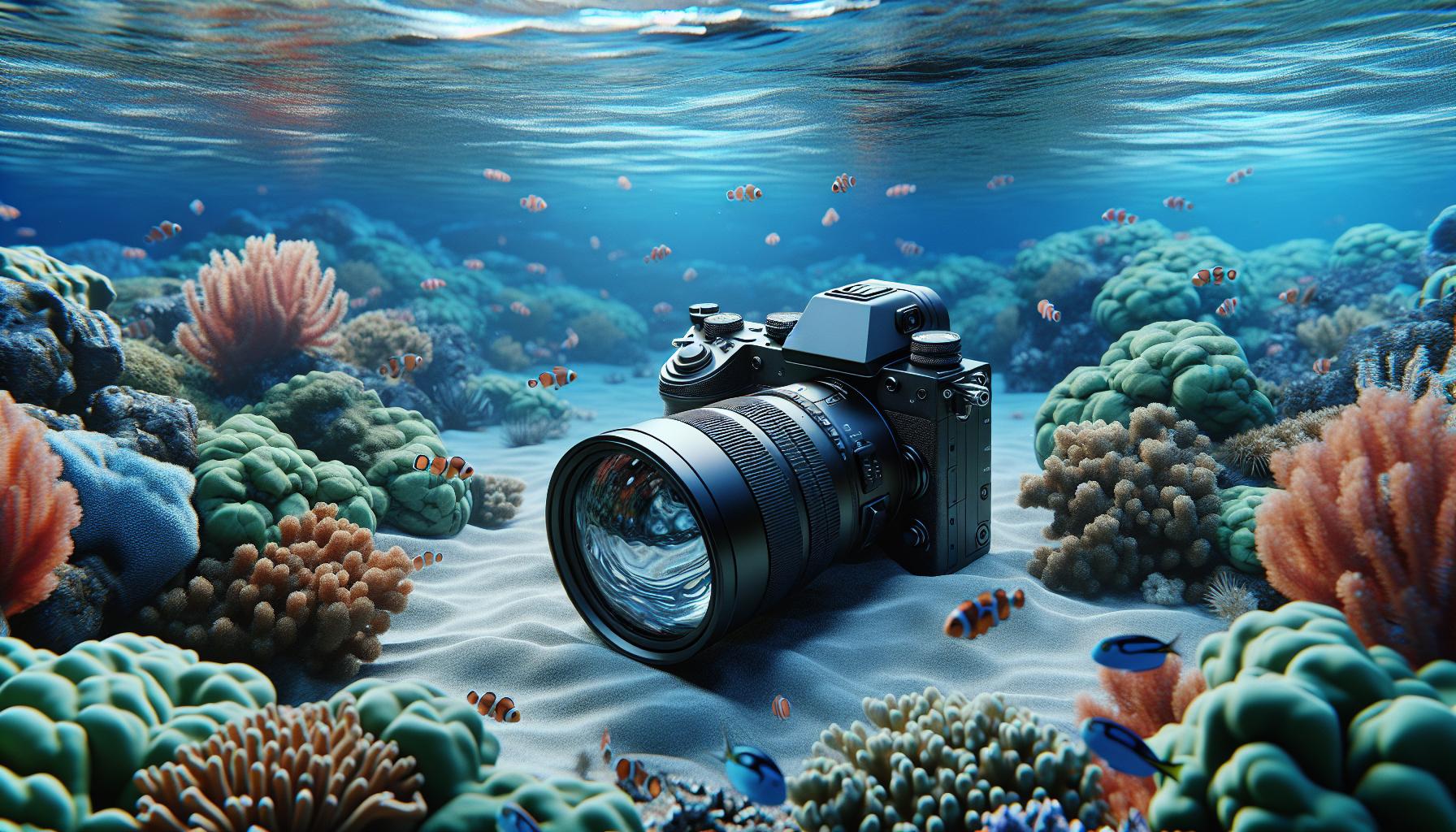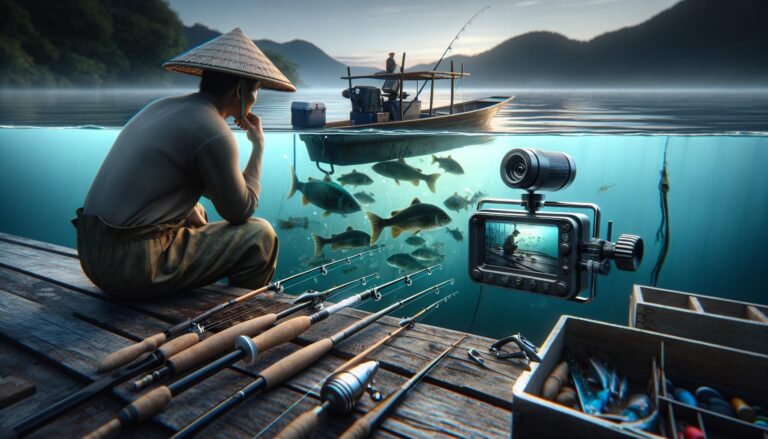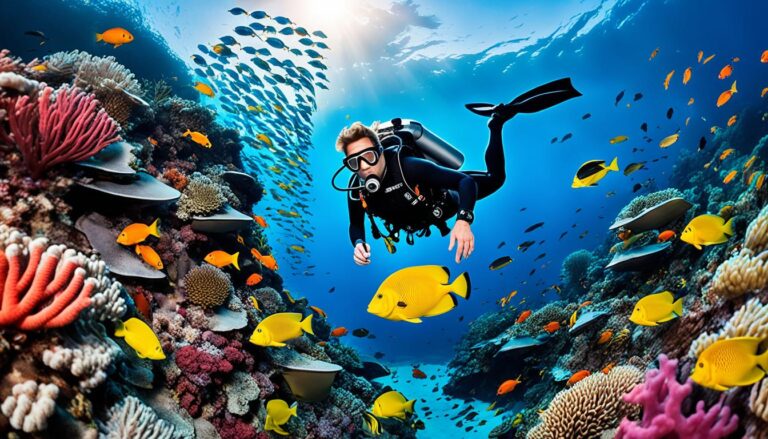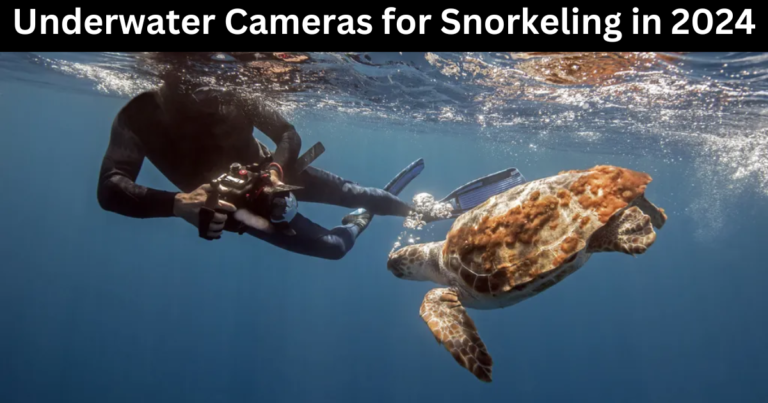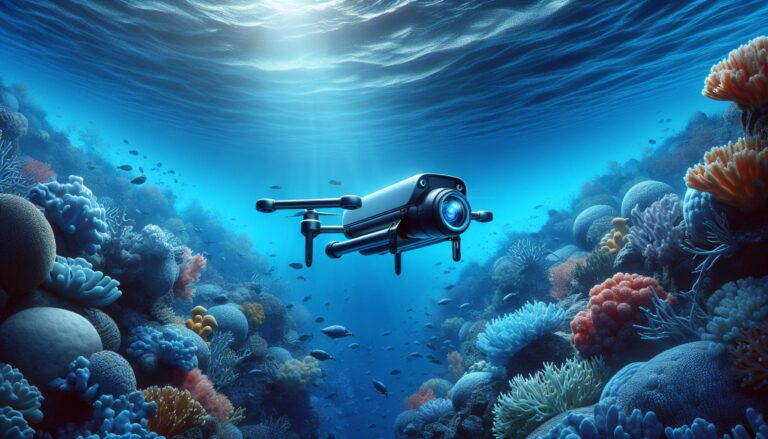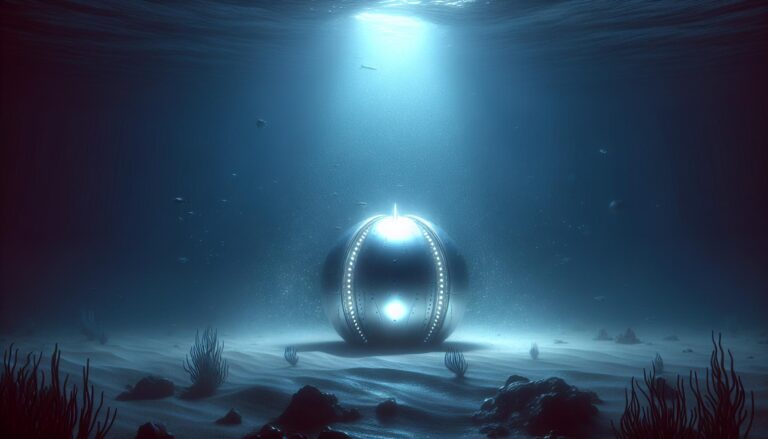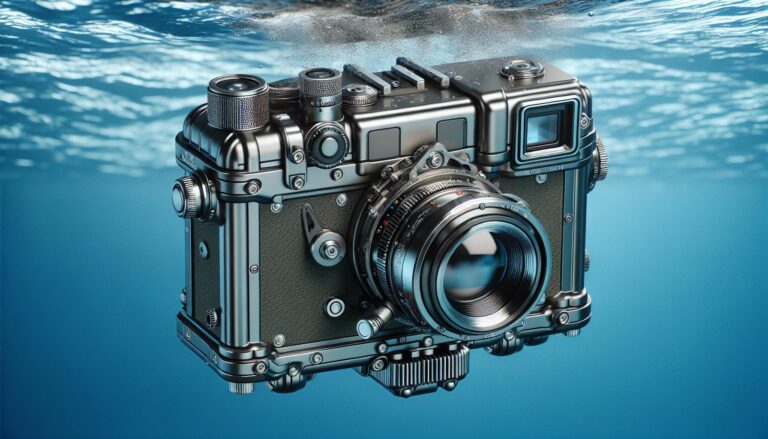Mastering Underwater Photography: A Guide to Professional Underwater Cameras
Diving into the deep, blue sea and capturing its mesmerizing beauty – sounds like a dream, doesn’t it? But with the right gear, it’s a dream you can turn into reality. If you’ve got a passion for underwater photography, a professional underwater camera is your ticket to a world unseen by most.
These cameras aren’t just waterproof versions of their land-based counterparts. They’re specially designed to handle the challenges of underwater photography – from dealing with the lack of light to capturing sharp, vibrant images despite the water’s distorting effects.
Overview of Professional Underwater Cameras
Delving into the realm of professional underwater cameras, it’s germane to focus on their unique aspects. They’re specifically crafted devices, boasting features tailored for challenging marine environments.
Key Features to Look For
When selecting professional underwater cameras, some vital features command attention. First, the depth rating indicates how far below sea level the camera operates without damage. Most professional underwater cameras perform up to 30-40 meters deep. For instance, Nikon Coolpix W300, known for its 30m underwater capability. Next, consider the camera’s megapixels, crucial in capturing high-resolution images. For example, GoPro Hero 7 Black captures images with its powerful 12-megapixel lens.
Lens quality, offering sharp, clear images, deserves attention too. Cameras like Olympus Tough TG-6, renowned for their high-quality lenses, make impressive options. Lastly, studying the light sensitivity settings becomes essential, reducing the reliance on artificial lighting underwater.
Understanding Camera Types
Understanding the types of professional underwater cameras plays a pivotal role in purchasing decisions. Generally, they’re categorized into three classes: compact, DSLR, and mirrorless. Compact cameras like Sealife Micro 2.0 are lightweight, easy to handle, making them great starter cameras. DSLR cameras, such as Canon EOS 5D Mark IV, provide exceptional image quality and control but can be bulky and costly. Lastly, mirrorless cameras, for example, Sony Alpha a6400, offer DSLR-like quality and control in a less cumbersome package, becoming increasingly popular among underwater photographers.
Benefits of Using Underwater Cameras
Equipped with professional underwater cameras, photographers not only push creative boundaries but also redefine scuba diving experience as they chart unexplored subaquatic territories. In addition, such cameras enable capturing of the oceanic wonders in the most realistic and crisp manner.
Improved Scuba Diving Experiences
Underwater cameras, including compact, DSLR, or mirrorless, serve as prized tools in a scuba diver’s arsenal. They elevate the overall diving experience, turning each dive into an adventurous exploration. The immersive perspective captured by these cameras offers an added dimension to dive memoirs, far surpassing usual recollections.
Capturing the Underwater World
Chronicling aquatic life has never been more exhilarating. The advanced features of professional underwater cameras, such as high megapixels, optimal depth rating, superior lens quality, and keen light sensitivity settings, can do justice to the breathtaking beauty below the water surface. Accomplished with precision, these photos serve as stirring echoes of the underwater world, encapsulating the vibrant life and vivid hues found in various depths.
Popular Professional Underwater Camera Brands
Diving into the world of professional underwater cameras, two brands stand out – Olympus and GoPro. Both profile a range of equipment designed to adapt to the aquatic environment and capture stunning, high-resolution imagery.
Reviewing Olympus Cameras
Accredited for their robust design, Olympus cameras garner attention in the realm of underwater photography. Olympus cameras notably feature the Tough series, fit for underwater activities. Coupled with high-resolution image sensors and advanced image stabilization functionality, they aim for unmatched picture clarity, even in low-light underwater conditions. Designed to withstand depths of up to 15m without housing and 45m with housing, Olympus underwater cameras offer durability alongside excellent imaging performance.
Exploring GoPro Cameras
On the other hand, GoPro’s lineup of action cameras is a favored choice for adventure seekers. GoPro’s HERO series, with its waterproof capabilities up to 10m, offers versatility for both above and underwater use. The cameras, equipped with ultra-wide lenses and HyperSmooth stabilization, provide engaging and vivid footage of underwater ecosystems. Innovative designs, ease of use, and sturdy build quality set GoPro cameras apart as suitable companions for underwater excursions. A notable instance is GoPro’s Max 360, enabling panoramic underwater shoots, making it a unique option in the mark.
Comparison of Best Selling Models
Diving deeper into the realm of underwater photography, we explore two top-selling models: Olympus’s Tough series and GoPro’s HERO series. Let’s take a closer look at how these models stack up against each other in specs and performance, backed by user reviews and feedback.
Camera Specs and Performance Breakdown
When it comes to specifications, Olympus’s Tough series shines with its high-resolution image sensors and advanced image stabilization. It’s capable of diving depths up to 15m without housing and an impressive 45m with housing, allowing a versatile range for photographers. On the other side of the spectrum is GoPro’s HERO series, boasting waterproof capabilities up to 10m. Its ultra-wide lenses and unique features, such as 360-degree recording with the Max 360 model, make it one of the top contenders in the underwater camera market. Remember, each camera model offers specific advantages, selecting the right one depends on individual photography goals and preferences.
| Camera Model | Sensor | Image Stabilization | Depth Rating | Notable Features |
|---|---|---|---|---|
| Olympus Tough | High-resolution | Advanced | 15m (without housing), 45m (with housing) | Robust design |
| GoPro HERO | Standard | Basic | 10m | Ultra-wide lenses, 360-degree recording on Max 360 model |
User Reviews and Feedback
To understand the experience these cameras provide, we’ve checked out user reviews and feedback. Olympus’s Tough series users often praise the camera’s sturdy and reliable design, alongside its impressive depth rating. The high-resolution sensors allow for crystal clear underwater imagery, garnering positive feedback.
In contrast, GoPro’s HERO series, receives acclaim for its versatility and ultra-wide lenses. Users find it easy to navigate, even for newbies in the underwater photography scene. GoPro’s ability to capture vibrant footage of underwater ecosystems is savored by adventure seekers, indicating how the HERO series offers a comprehensive package of features that cater to a wide range of photographers’ needs.
Tips for Maintaining Your Underwater Camera
Keeping your underwater camera in peak condition isn’t just a one-off task; it’s a commitment. Let’s focus on pre- and post-dive procedures that can enhance camera functionality for captivating underwater imagery.
Handling and Pre-Dive Checks
First, handle your professional underwater camera with care, it’s crucial. A camera’s delicate components don’t take kindly to being dropped or knocked. So, always securely strap the camera to your wrist when in use and place it in a padded case when onboard a boat.
Pre-dive checks, too, play a pivotal role. Before each dive, inspect the O-rings, the circular seals that prevent water intrusion. They must be spotless, without grit, hair, or sand. Damaged or degraded O-rings? Replace them – it’s not worth risking a camera flood.
Also, make sure the camera’s housing is secure, and all buttons or dials work as they should. Remember, something that’s minor above water, such as a sticky shutter button, can prove problematic underwater.
Post-Dive Cleaning and Storage
When you’ve finished capturing the ocean’s wonders, it’s time for post-dive cleaning. Rinse the camera and housing thoroughly with fresh water to remove salt, sand, and other residues – they can hamper both camera function and image quality.
On rinsing, use a soft brush to gently clean the camera and housing, especially around buttons, dials, and seals. After brushing, rinse again before drying the camera with a soft, lint-free cloth.
Final step: storage. Store your professional underwater camera in a cool, dry place, away from direct sunlight – it helps prolong the camera’s lifespan. Before storage, remember to remove the battery and memory card, which can corrode if left in a camera unused for a while.
Maintaining your professional underwater camera requires careful handling, meticulous pre-dives checks, and conscientious post-dive cleaning and storage. By following these tips, you can enjoy capturing breathtaking underwater photographs and videos.
Conclusion
I’ve journeyed with you through the exciting realm of professional underwater cameras, highlighting the significance of key features and top brands like Olympus and GoPro. I’ve shared valuable insights on how to care for your underwater camera, ensuring you get the most out of your investment. Remember, your pre-dive checks and post-dive cleaning are just as crucial as the camera’s megapixels or depth rating. And don’t forget the importance of proper storage. With these tips, I’m confident you’ll not only extend the life of your camera, but also enhance your underwater photography experiences. Now, you’re ready to dive in and capture the underwater world in all its glory.

